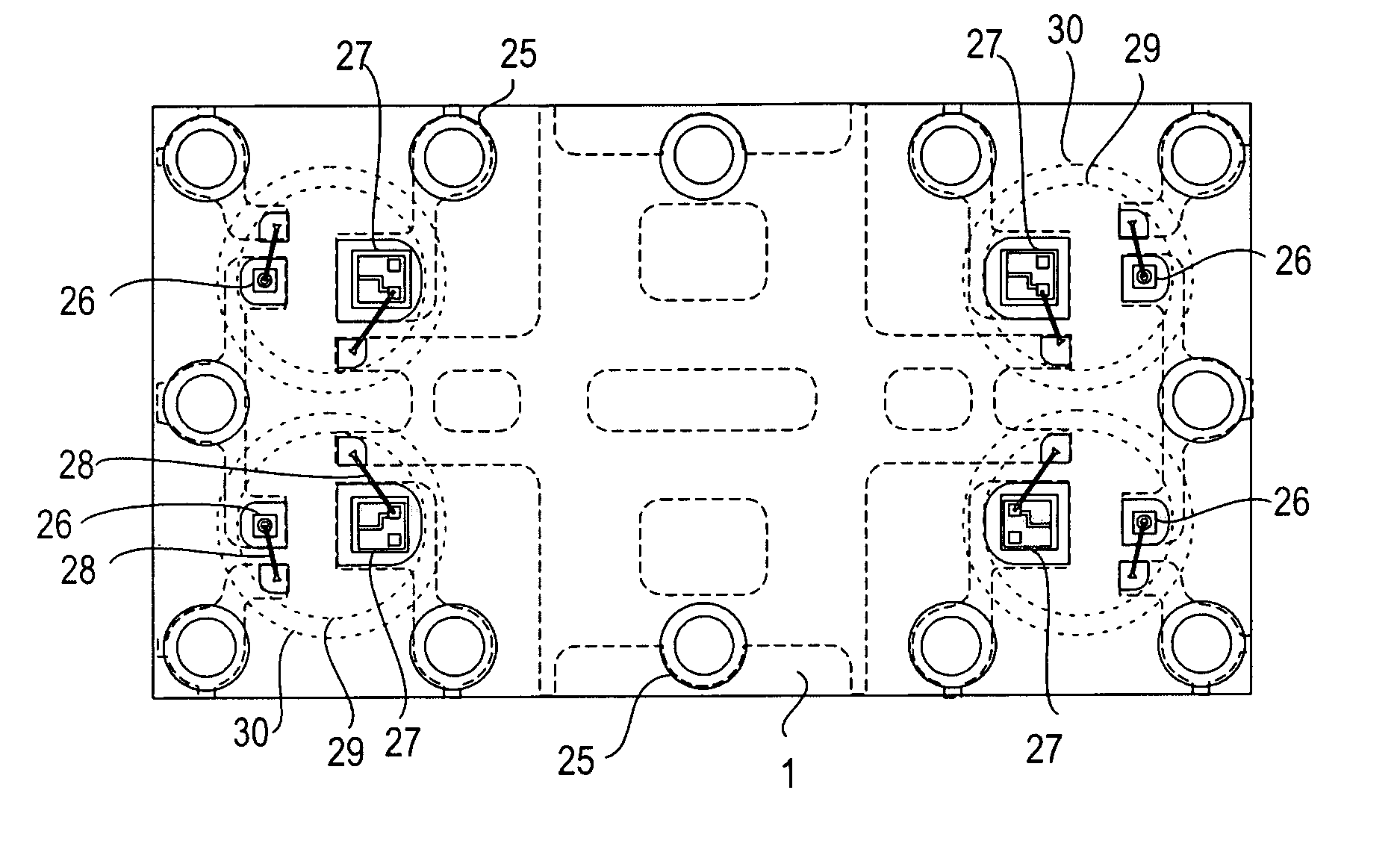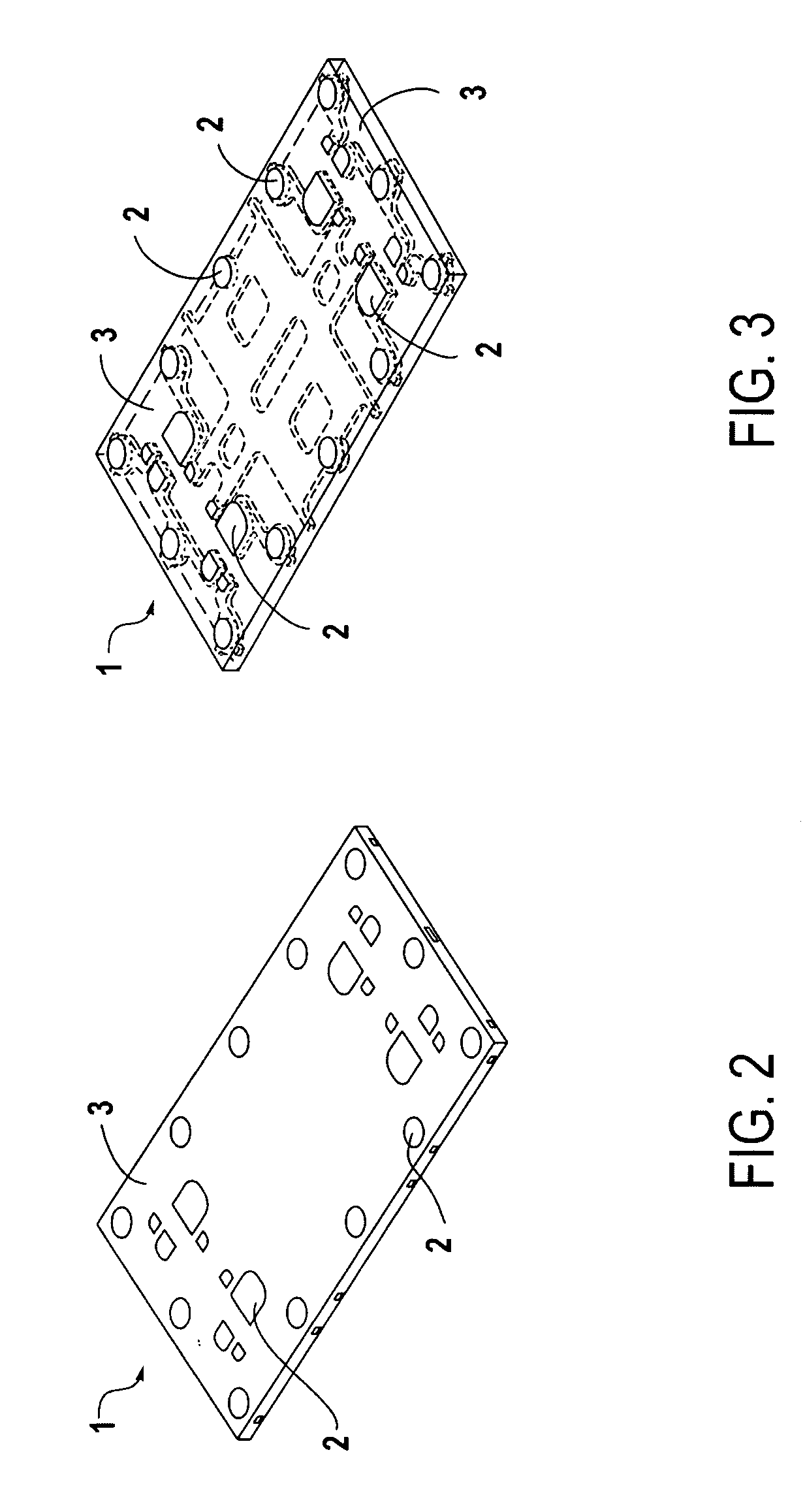Surface mount multi-channel optocoupler
a multi-channel optocoupler and surface mount technology, applied in the field of surface mount multi-channel optocouplers, can solve the problems of optocoupler packages b>10/b> that require an expensive and time-consuming overmolding process, and add to the time and expense of forming an optocoupler packag
- Summary
- Abstract
- Description
- Claims
- Application Information
AI Technical Summary
Benefits of technology
Problems solved by technology
Method used
Image
Examples
Embodiment Construction
[0025]In embodiments of the invention, one or more optocouplers are on a single substrate that is formed from a leadframe and a molding compound. For example, there can be four optocouplers in a quad array on a single substrate. Each optocoupler can include an optical emitter (e.g., a light emitting diode) and an optical receiver (e.g., a photodiode). The spacing between the optical receiver and the optical emitter can be from about 0.3 mm to about 0.5 mm. Each optocoupler can be secured with an optically transmissive coupling gel and can be encapsulated with an opaque, highly reflective epoxy based polymer. The functional terminals for the optocouplers can be grouped and routed towards the periphery of the package so that a ball grid array layout is formed. The optical receivers, the optical emitters, and wire bond pads are arranged so that they will correspond to the terminals of the leadframe.
[0026]Logic devices such as control chips can also be on the leadframe-based substrate a...
PUM
 Login to View More
Login to View More Abstract
Description
Claims
Application Information
 Login to View More
Login to View More - R&D
- Intellectual Property
- Life Sciences
- Materials
- Tech Scout
- Unparalleled Data Quality
- Higher Quality Content
- 60% Fewer Hallucinations
Browse by: Latest US Patents, China's latest patents, Technical Efficacy Thesaurus, Application Domain, Technology Topic, Popular Technical Reports.
© 2025 PatSnap. All rights reserved.Legal|Privacy policy|Modern Slavery Act Transparency Statement|Sitemap|About US| Contact US: help@patsnap.com



